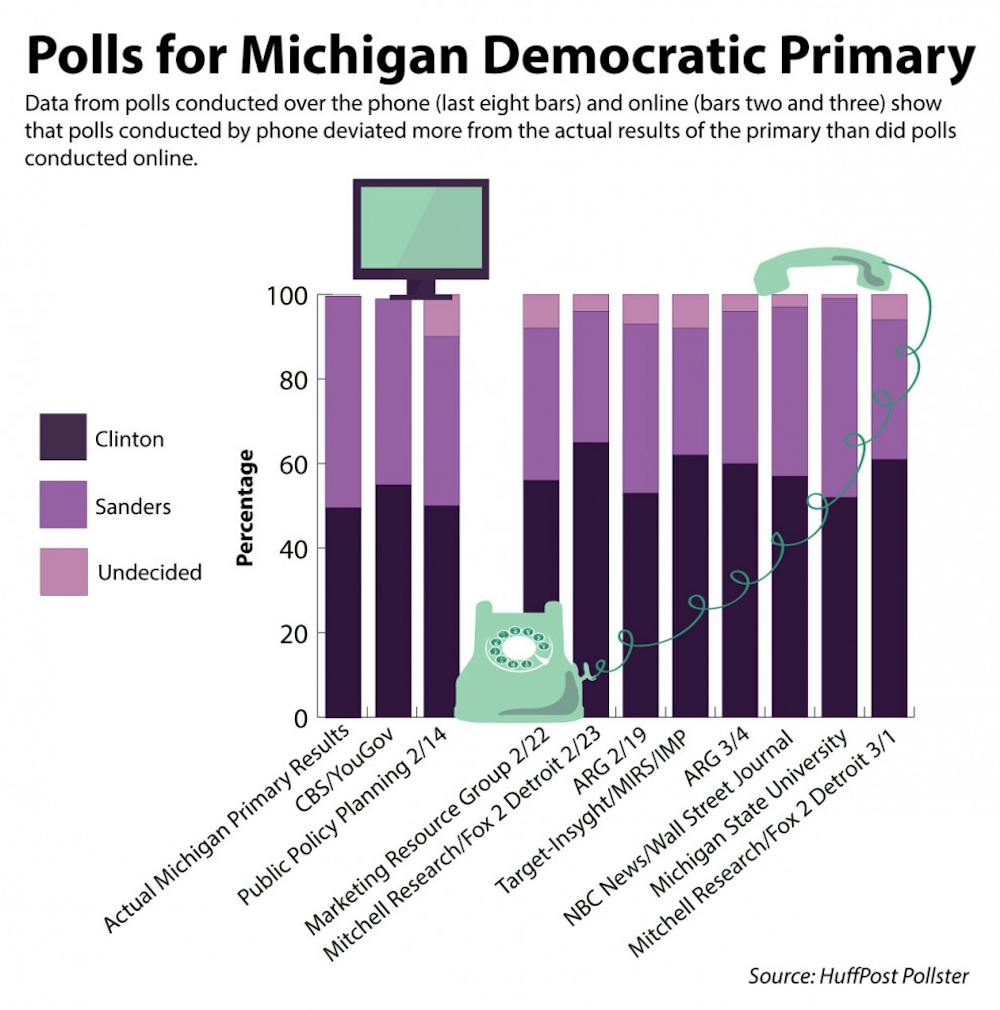In contrast to previous trends, the 2016 election cycle has seen online polling used more often than traditional telephone polls. But while online polling is cheaper than telephone polling and has produced more reliable results in certain recent contests, its methods have drawn skepticism from polling experts. Meanwhile, phone polls may also be dropping in accuracy.
“If you go back 15 or 20 years, it was pretty much dominated by telephone pre-election polls, and that’s certainly no longer the case,” said Courtney Kennedy, director of survey research at Pew Research Center. There are “some telephone polls that are still being conducted, but there’s increasingly heavy use of online samples.”
Traditional polling methods may no longer produce results with the same level of accuracy. “There’s some evidence that traditional ways that pollsters have used to model likely voters might not be working as well as they used to,” she added.
Political analysts expressed surprise when Michigan, a state predicted to vote overwhelmingly for former Secretary of State Hillary Clinton, went to Sen. Bernie Sanders, D-VT, who earned 49.8 percent of the vote — slightly more than Clinton’s 48.3.
Online polls in Michigan were more accurate than telephone polls, which predicted a resounding Clinton victory, according to data from various polling companies.
This shift is occurring for two reasons, said Rachel Franklin, associate research professor of population studies and associate director of Spatial Structures in the Social Sciences.
“People used to be much more willing to take part (in polls), and as soon as you have a large number of people saying no, you introduce the opportunity for bias,” Franklin said.
“The other issue is that contacting people face-to-face, even telephoning them, costs so much money,” Franklin added. “It’s super, super expensive.”
But online polls present their own drawbacks.
David Redlawsk, director of the Eagleton Center for Public Interest Polling and professor of political science at Rutgers University, noted that respondents voluntarily opt in for some online polls, which may skew the sample. “There’s nothing good about that at all. Meaningless,” he said.
Online polling “tends to be a little less accurate,” said Richard Arenberg, adjunct lecturer in international and public affairs.
Some online polls are striving for accuracy using methods that simulate a random sample, but with online polling, it’s impossible to tell if you have a random sample of the population, Redlawsk said. “They’re not technically random samples in the way that we’re used to with telephone surveys,” he added, but they do “at least attempt to be representative of the population.”
“There are no lists to work from the way there are with telephones,” Redlawsk added.
But the methods of online polling are still progressing. “I think it’s inaccurate to paint all online samples with the same brush,” Kennedy said. “Some vendors have quite elaborate and sophisticated techniques,” she said, but “other vendors really do a lot less. They might just use quotas to balance the sample on age and gender, and that’s it. So you see tremendous differences.”
Pollsters have been encouraged to increase transparency within their organizations. The American Association for Public Opinion Research launched its Transparency Initiative in 2014 in an effort to boost disclosure of research methodology by survey organizations. About 75 pollsters have signed on to abide by the disclosure rules set by AAPOR, Kennedy said.
Arenberg highlighted the importance of measures to ensure polling quality.
“Going into the future, there’s going to have to be a detailed reassessment of what the industry is actually doing and what is viable,” Arenberg said.
The shift toward online polling will likely continue going forward, Kennedy said. “It’s where society is going. It’s where technology is going. It’s where the cost efficiencies are.”
“Online surveys have the potential to be much cheaper and to get larger sample sizes,” Franklin said. “There are lots of funded research projects right now to try and figure out how we can do that in a way that’s going to give us data we can trust. I just don’t think we’re there yet.”





